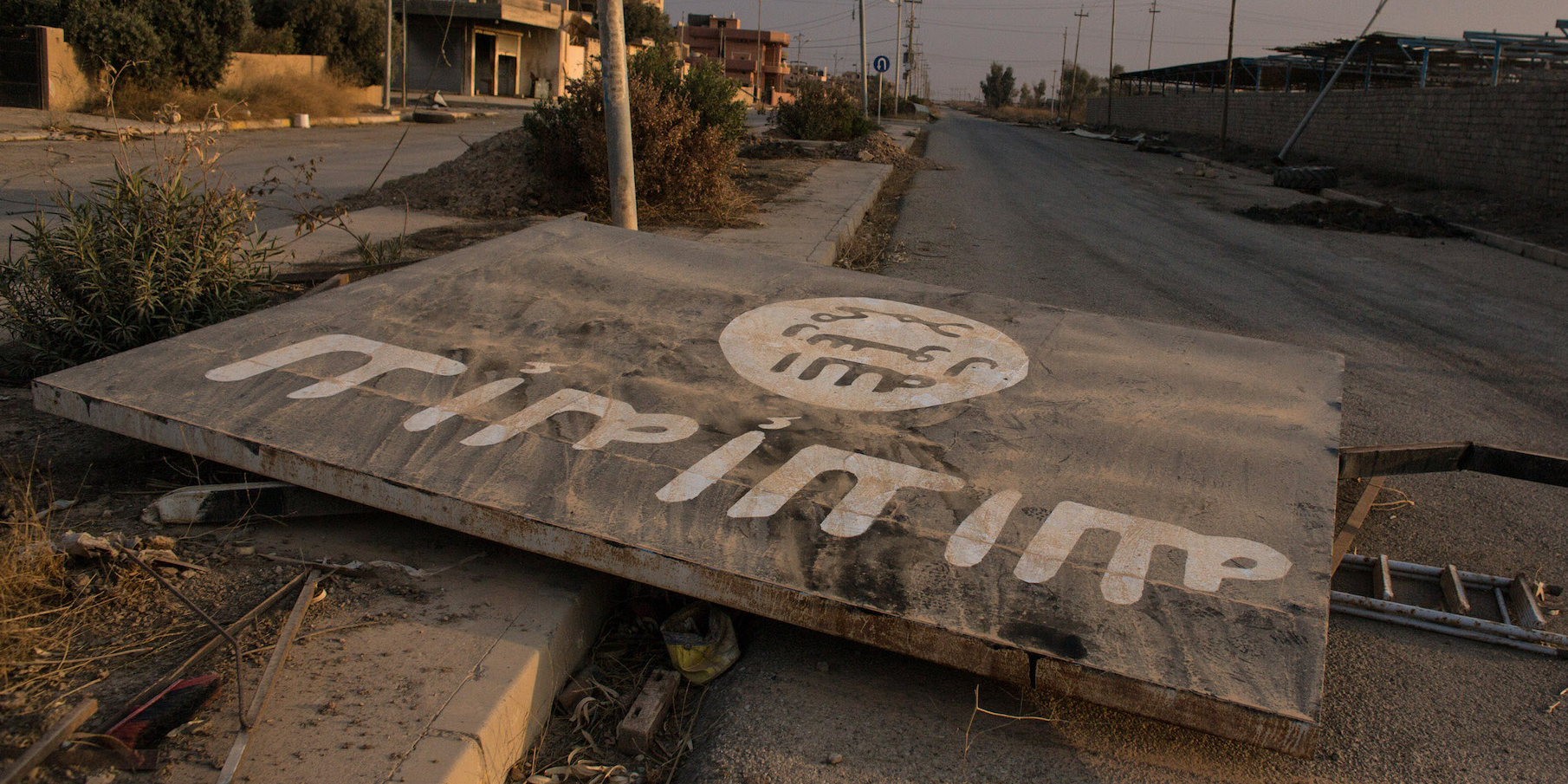- Thousands of ISIS prisoners being guarded in Syria are under guard by the Syrian Democratic Forces (SDF), which the US just abandoned in the face of a Turkish incursion into northeast Syria. ISIS leadership has encouraged members in Iraq and Syria to break out of the prisons and camps where they’re being held to build a resurgent ISIS.
- But what that looks like is unclear, Daniel Byman of the Brookings Institution told Insider. “There will be more opportunities for the Islamic State,” he said. “This is bad news,” Byman said, “but the real question is, how bad?”
- But other experts and officials warn that ISIS could take advantage of the instability in Syria and Iraq to build itself back to power.
- Jennifer Cafarella of the Institute for the Study of War told Insider that ISIS leadership is re-organizing and re-structuring to prepare for a new ISIS.
- Visit Business Insider’s home page for more stories.
President Donald Trump declared the ISIS caliphate defeated in March of this year, but after a Turkish incursion into northeast Syria where ISIS prisoners are held, and with unrest in Iraq, US officials and experts warn that the instability in the region is providing ISIS with the opportunity for a comeback.
“Recent observations by our men and women on the ground highlight that the ISIS population being evacuated from the remaining vestiges of the caliphate largely remains unrepentant, unbroken and radicalized,” Gen. Joseph Votel told the House Armed Services Committee in March, when the caliphate was routed.
‘There will be more opportunities for the Islamic State’
The conditions – thousands of fighters and supporters guarded by a force stretched thin, instability in the regions where ISIS was active – point to a resurgence. But to what extent that resurgence occurs remains to be seen, Daniel Byman, a senior fellow at the Brookings Institution’s Center for Middle East Policy, told Insider. “We know in the past, they’ve done prison breakouts, they’ve seen it as a top priority,” he said.
“There will be more opportunities for the Islamic State,” Byman said, but many of the conditions that led to ISIS’s rise in 2014 – sectarian violence in Iraq, the relative disinterest on the part of the Syrian government in the areas where ISIS was active, and ignorance on the part of other global actors – have changed.
"This is bad news," Byman said, "but the real question is, how bad?"
Byman told Insider that while the prison breaks are cause for concern, he was most worried about the 60 or so high-value ISIS fighters that US forces didn't secure in their scramble to leave Syria as The New York Times reported.
"If our commanders' had had a day's notice, something could have done something about this," he said, stressing that in this situation the "quality" of the militants matters, as well as the number of fighters getting released.
Re-structuring ISIS leadership
ISIS leadership has shown itself to be preparing for this battle since last year, said Jennifer Cafarella, research director at the Institute for the Study of War.
"Some of the best signs of the deliberate efforts by the ISIS leader [Abu Bakr al-Baghdadi] to re-establish a firmly-controlled chain of command include a purge he conducted in late 2018 of military commanders whose skills or loyalty he no longer trusted," she said.
"So that included reports of mass executions, actually, of ISIS's own commanders for those he accused of betraying him or failing him on the battlefield, and the appointment, according to multiple reports, of Iraqi commanders into important military positions, because he trusts the Iraqi wing of ISIS substantially more than some of the Syrian or foreign elements," Cafarella told Insider.
Better produced ISIS media and its wider dissemination shows that "Baghdadi has restructured his military forces in Iraq and Syria, as well as restructuring his provinces abroad, which is further indication of the extent of his command of control and the professionalism of the ISIS military force," Cafarella told Insider.
Cafarella also noted that a vehicle-borne improvised explosive device (VBIED) that was detonated in Qamishli last week - and claimed by ISIS - shows that ISIS's increased sophistication and return to its previous methods of terror.
Chaos sows chaos
The Pentagon issued a report in August warning of the resurgence of the terror group both in Iraq and Syria due to the lack of US presence in both Iraq and Syria, and retired three-star general Michael Nagata warned in Defense One last week that the US's actions in Syria and Iraq deprived coalition forces of the opportunity to gain intelligence from captured ISIS fighters, as well as benefiting from and causing chaos in both Syria and Iraq.
"If I were a surviving ISIS leader and watching the American announcement that they were leaving northern Syria, and watching the political chaos and violence in Baghdad, I would be turning to my colleagues and saying 'We're not done yet. I see opportunities to recover and rebound,'" Nagata told Defense One.
While the Iraqi protests at present are more general, and not sectarian in the way they were in the lead-up to ISIS's original rise, ISIS may be able to exploit Iraqis' dissatisfaction with the government of Prime Minister Adel Abdul-Mahdi, Nagata said.
What's more, Nagata said, it may just be a numbers game; "Numerically, it's still much larger than al-Qaeda in Iraq ever was in its heyday …. And Al Qaeda in Iraq darn near brought down the government in Iraq," he said.

